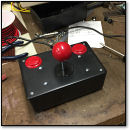A Peek Inside the Classic Computer Magazine Archive
Sunday, June 25th, 2006 Here’s a site worth noting for all you historians out there. For the last ten years, Kevin Savetz has been hard at work transcribing the text of hundreds of vintage computer and video game magazines. Better yet, he’s received full permission from the original magazine publishers to provide the articles for free online. And they’re all available in the Classic Computer Magazine Archive. Kevin’s focus was originally on magazines about Atari consoles and computers, but it’s no surprise since the whole operation started out as the “Digital Antic Project,” whose aim was to put the entire text of the Atari-centric magazine “Antic” online. In September 2000 he met that goal and soon turned his attention to other magazines like the Atari ST-focused “STart” and multiplatform magazines like “Compute!” and “Creative Computing.” Now the site contains articles from nine different publications, either in whole or in part, available for online view.
Here’s a site worth noting for all you historians out there. For the last ten years, Kevin Savetz has been hard at work transcribing the text of hundreds of vintage computer and video game magazines. Better yet, he’s received full permission from the original magazine publishers to provide the articles for free online. And they’re all available in the Classic Computer Magazine Archive. Kevin’s focus was originally on magazines about Atari consoles and computers, but it’s no surprise since the whole operation started out as the “Digital Antic Project,” whose aim was to put the entire text of the Atari-centric magazine “Antic” online. In September 2000 he met that goal and soon turned his attention to other magazines like the Atari ST-focused “STart” and multiplatform magazines like “Compute!” and “Creative Computing.” Now the site contains articles from nine different publications, either in whole or in part, available for online view.
Kevin loves sending me news of his latest additions (and I’m not complaining), which I’ve meant to tell you about before. Just this morning he wrote:
AtariMagazines.com has added the full text of 21 more issues of Compute! magazine: Fall 1979 (the first issue!), January 1981, February 1981, March 1981, April 1981, October 1981, December 1981, February 1982, June 1982, July 1982, October 1982, November 1982, January 1983, March 1983, June 1983, August 1983, September 1983, October 1983, September 1989, November 1990, and December 1990.
Published from 1979 through 1994, Compute! was a multiplatform computer magazine covering Atari, Apple, Commodore, Texas Instruments, Timex/Sinclair, and other early personal computers.
If you’re the kind of collector / historian who likes to delve deep into the news, thoughts, and reviews of the period, I definitely recommend checking the Archive out. I’d also like to thank Kevin Savetz for providing a valuable service and resource for the vintage computing and gaming enthusiast.







 There was one insurmountable obstacle between the Apple and me. At $1195 it was literally the equivalent of six months’ rent. It might as well have been a million dollars. So I looked for alternatives. I thought about building a computer. In the early 80s it wasn’t all that unusual for people to build their own computers from scratch, but it wasn’t like homebuilt computers today – you didn’t go to a computer store and buy a motherboard and CPU and case and power supply and hard drive and bolt it all together and pop in your Windows install CD. Building computers meant soldering and drilling and (sometimes) even writing your own software to make things work. When the Apple II came out in 1977 it was one of the first “store bought” computers that didn’t require any assembly. That’s one of the reasons I wanted one. As a full time student with a job and a wife I really didn’t have time to figure out how to build a computer from scratch.
There was one insurmountable obstacle between the Apple and me. At $1195 it was literally the equivalent of six months’ rent. It might as well have been a million dollars. So I looked for alternatives. I thought about building a computer. In the early 80s it wasn’t all that unusual for people to build their own computers from scratch, but it wasn’t like homebuilt computers today – you didn’t go to a computer store and buy a motherboard and CPU and case and power supply and hard drive and bolt it all together and pop in your Windows install CD. Building computers meant soldering and drilling and (sometimes) even writing your own software to make things work. When the Apple II came out in 1977 it was one of the first “store bought” computers that didn’t require any assembly. That’s one of the reasons I wanted one. As a full time student with a job and a wife I really didn’t have time to figure out how to build a computer from scratch. 





